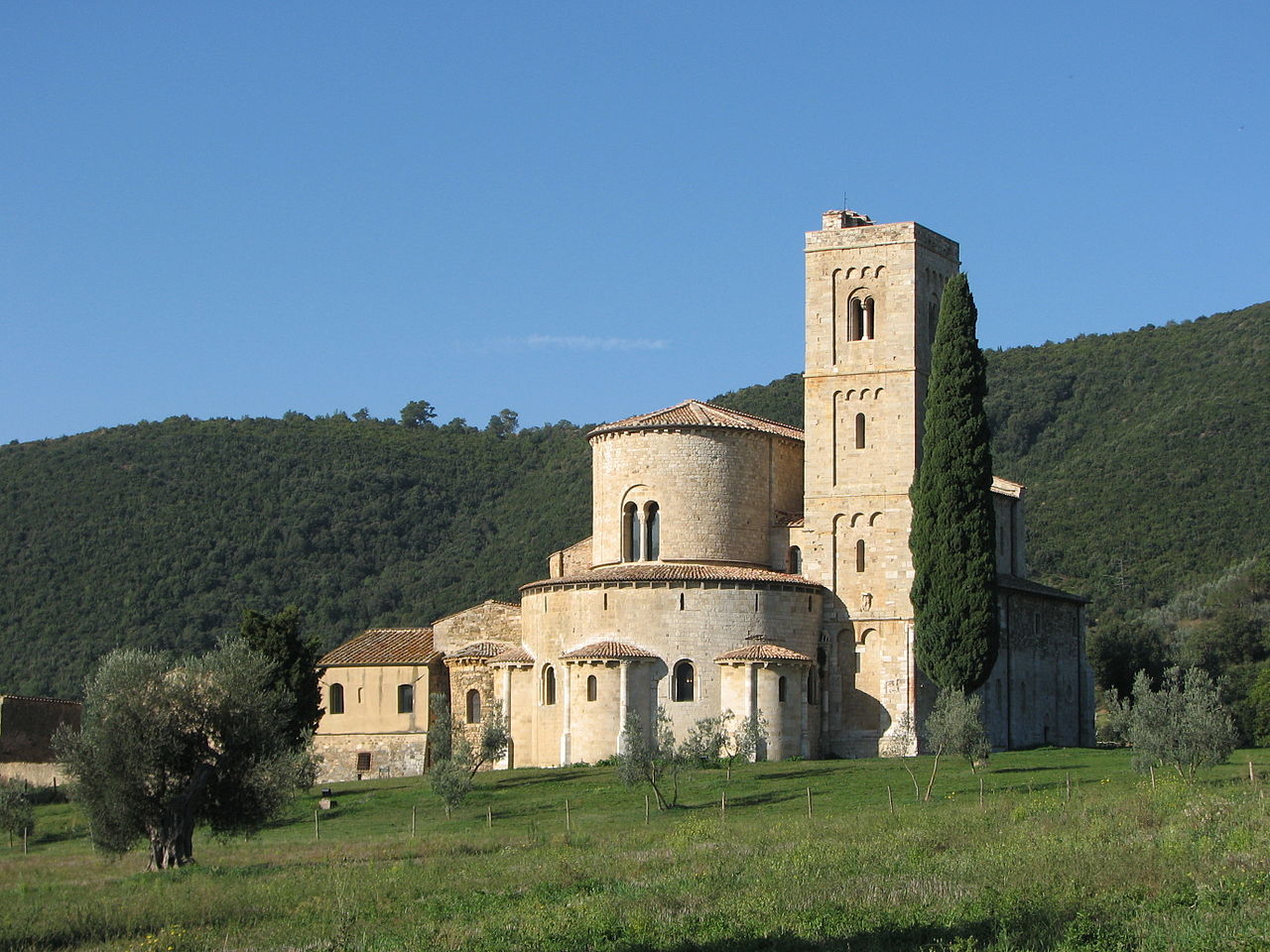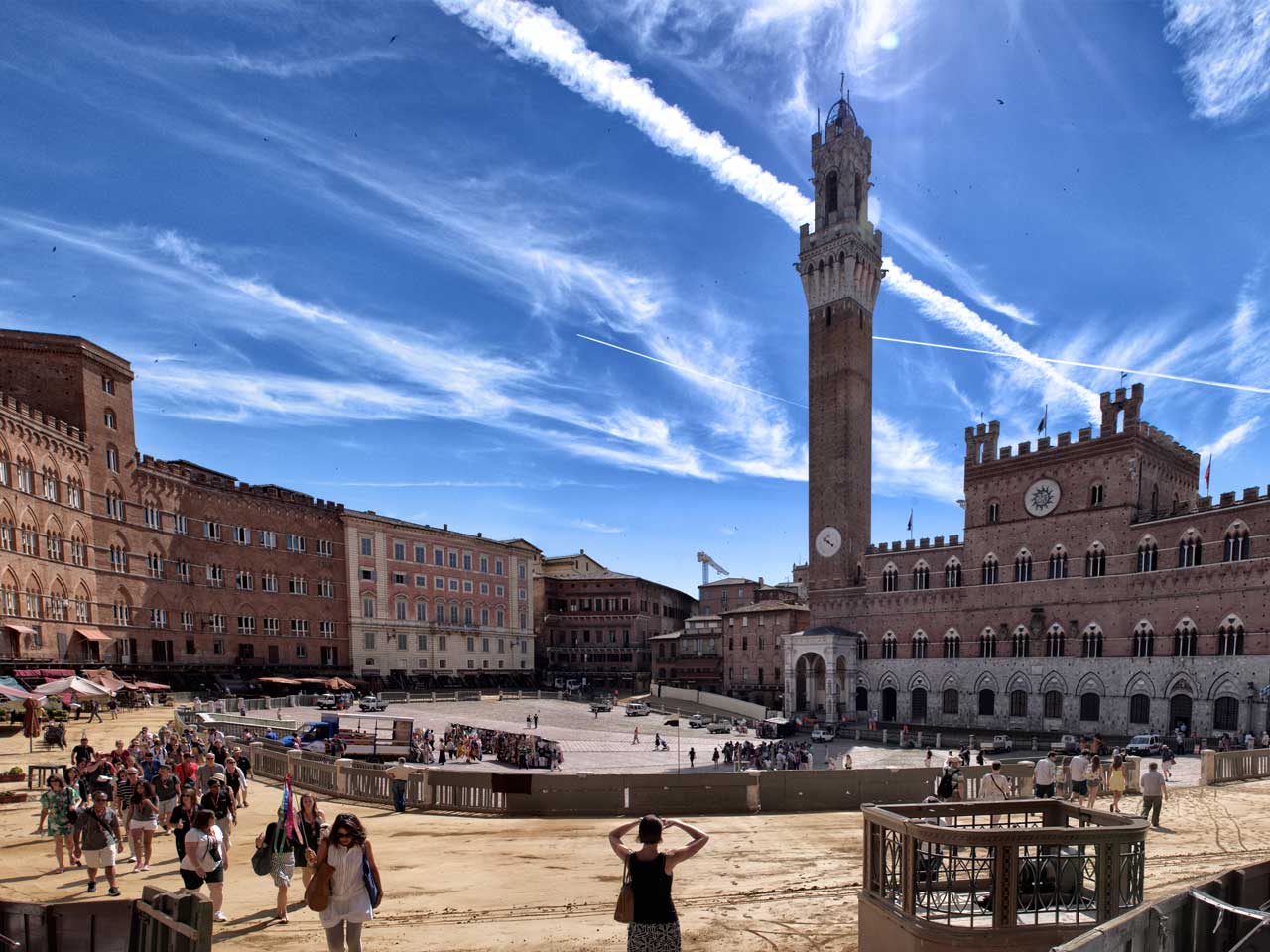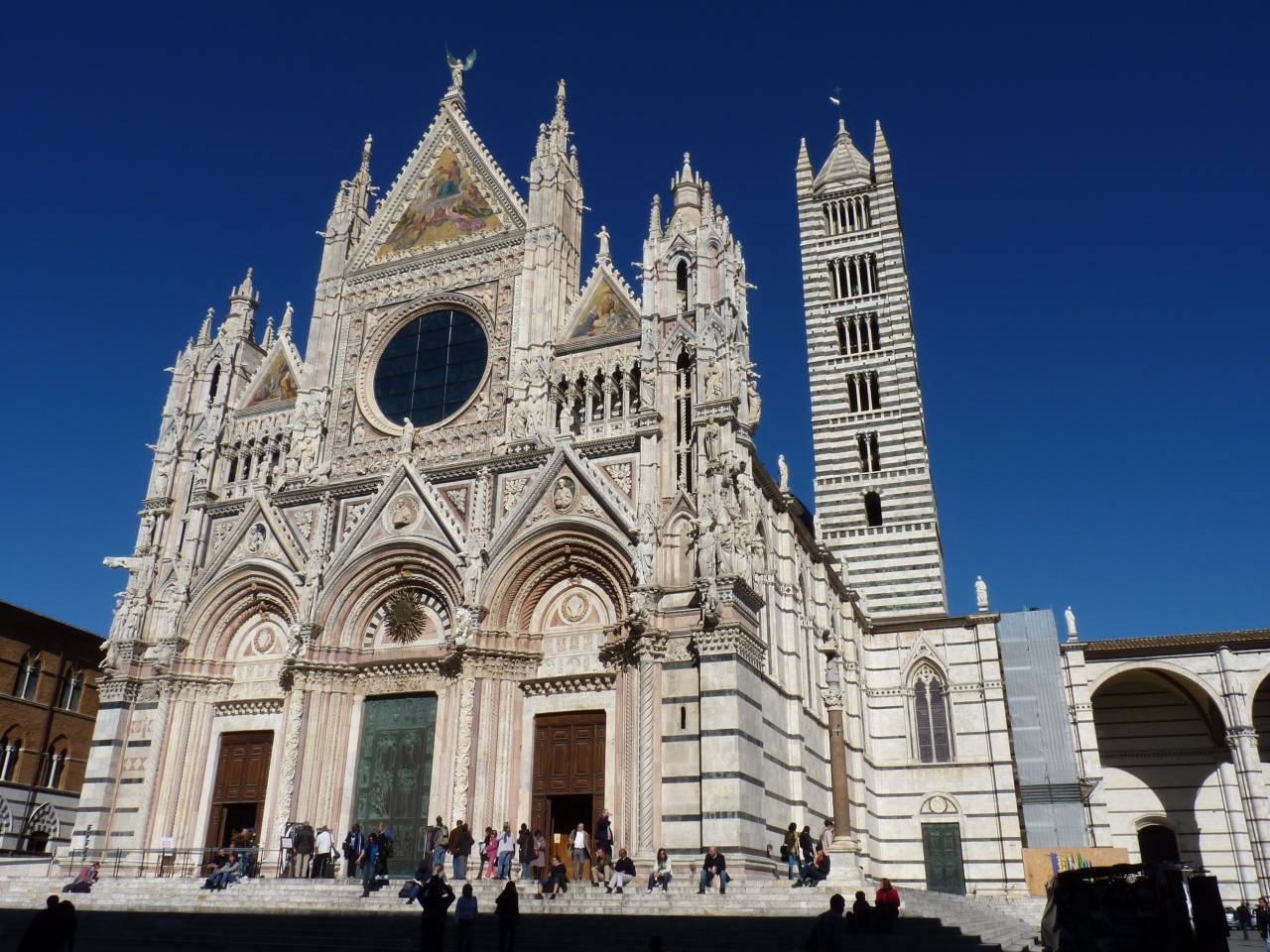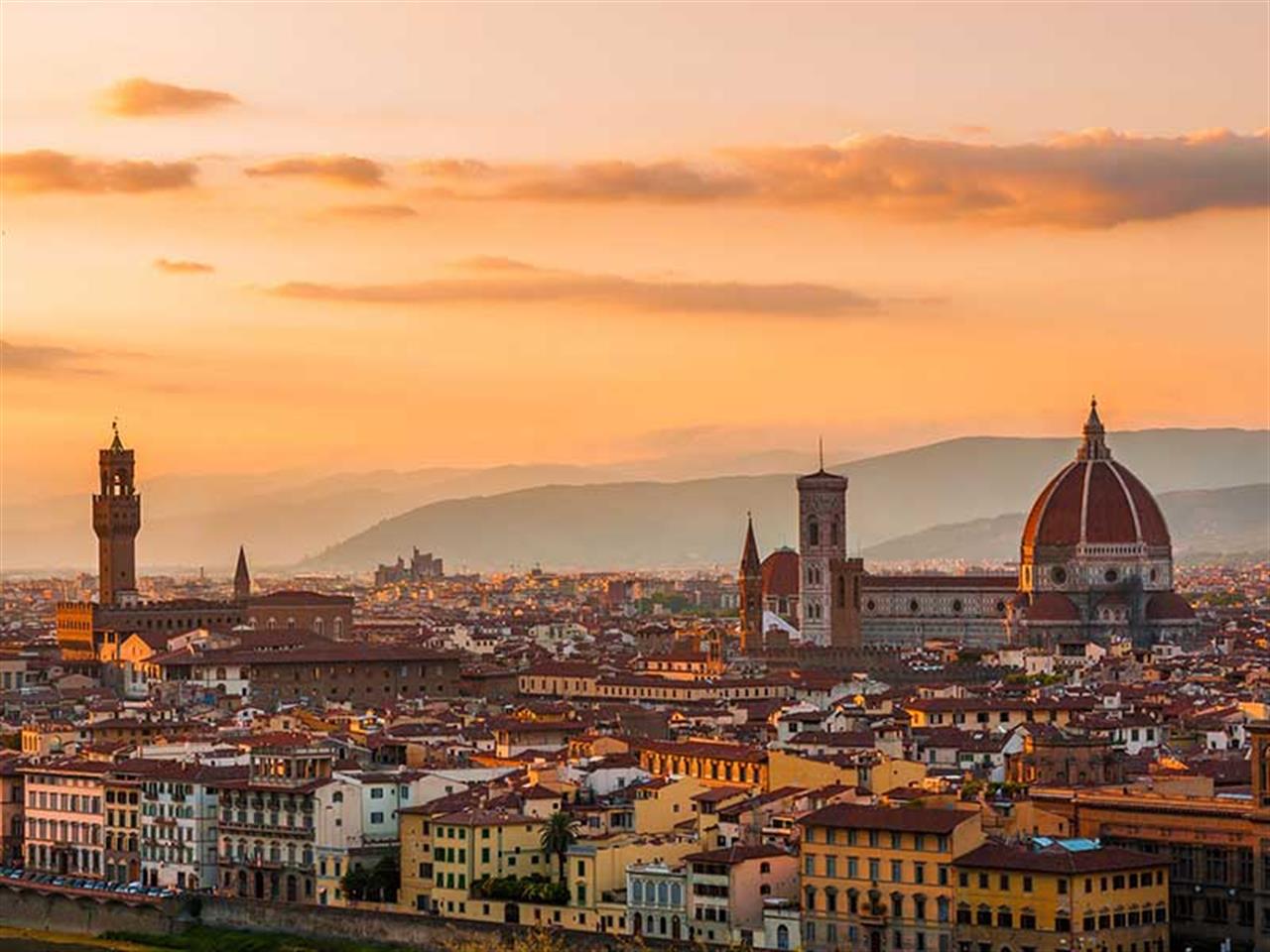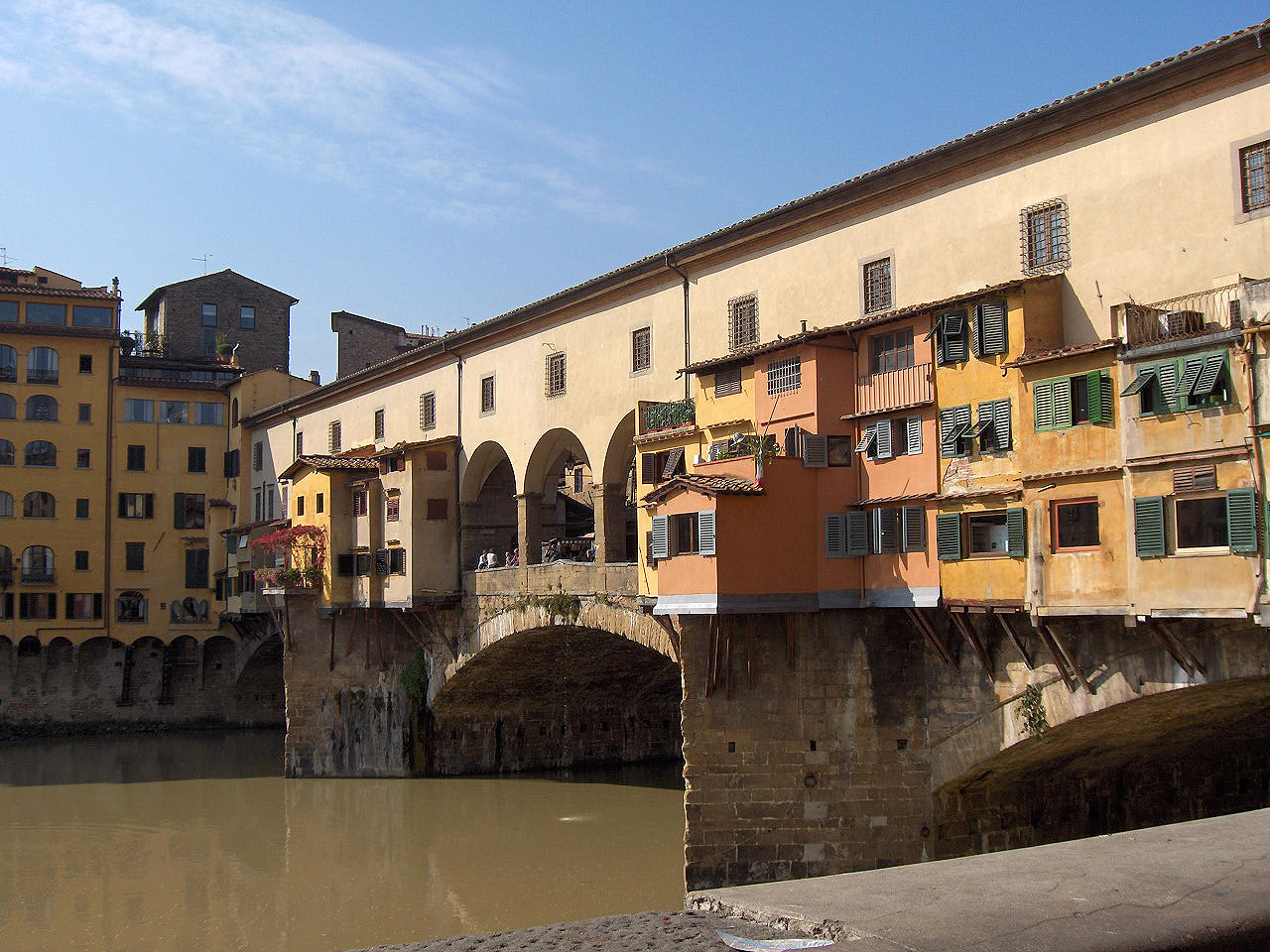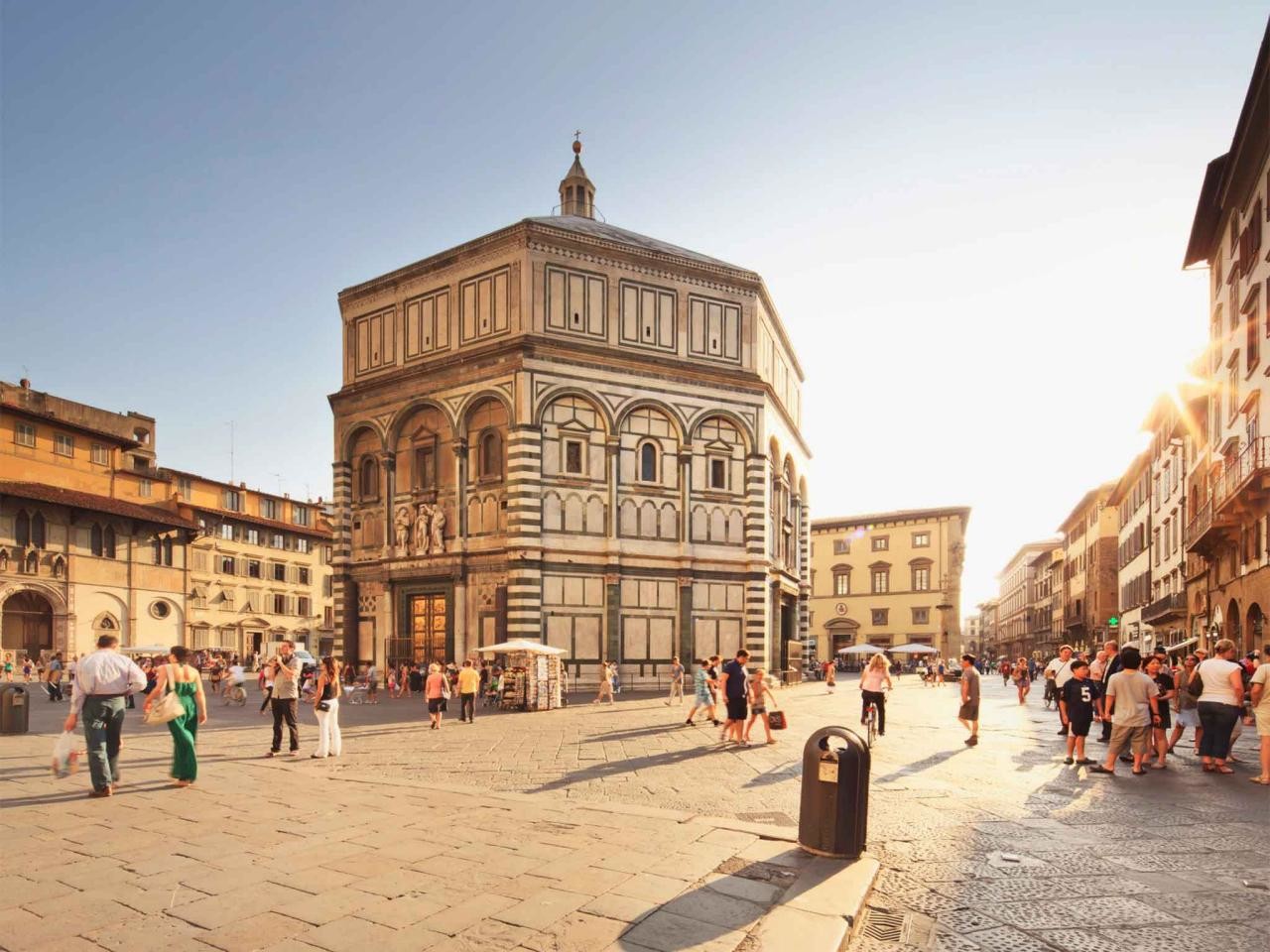BOOK HERE FOR THE BEST PRICE!
Siena
Grab coffee, gelato, or a glass of Chianti and people watch in the Piazzo del Campo. Get lost in the side streets and alleyways, exploring the seventeen contrade (neighborhoods) with their distinctive symbols. Marvel at the Gothic architecture of buildings like the Basilica di San Domenico, the Duomo, Palazzo Tolomei and more.
There’s something to do during every season in Siena. The most well known event is, of course, the Palio — the famous horse race. Two Palios are run each summer, one in early July and one in mid-August. In the days leading up to the races, you can find special dinners, parties, and teams of drummers and flag throwers preparing for the big day in every neighborhood.
Where is it?
DINING
Ristorante-Pizzeria Nonno Mede, Via Camporegio 19 Tel. 0577 247966; closed.
Monday Excellent views of Siena.
Ristorante La Taverna di San Giuseppe, Via Giovanni Dupre, 132 – Tel. 0577 42286; closed Sunday
Traditional Tuscan menu, good selection of wines.
Osteria del Gatto, Via San Marco, 8
Tel. 0577-287133 closed.
Saturday lunch and all day Sunday.
Osteria il Vinaio di Bobbe e Davide, Via Camollia, 167 Tel. 0577 49615; closed Sunday.
Traditional osteria great for a quick lunch on a budget.
Tre Cristi Enoteca Ristorante, Vicolo Provenzano 1-7 Tel. 0577 280608; open for lunch and dinner, closed. Sunday A higher end restaurant with both meat and seafood dishes.
Florence
Keep in mind that it can be quite hot, especially in the summer, so you may decide to do most of your sightseeing around town in the mornings and evenings, and take advantage of restaurants and museums for lunch during the hot mid-day hours.
A good guide book, a decent map, and a sturdy pair of walking shoes are all you need for a trip to Florence – an arrestingly beautiful city that’s best appreciated from Piazzale Michelangelo. Below are some of our favorite places to visit in the city, recommended by Spannocchia staff members:
PIAZZALE MICHELANGELO – This square has an amazing view overlooking the city and the Arno river. IL
GRANDE MUSEUO DEL DUOMO – The Duomo is the main Church of Florence with the extraordinary dome of Brunelleschi. To visit the dome, bell tower, baptistery, crypt and museum, you’ll need the single entrance ticket purchased in person or online, which allows you to visit each of these sites for 48 hours. Reservations are necessary to climb the dome, and recommended for the museum and bell tower.
UFFIZZI – Known as one of the most important museums in Italy, and in the world, here you’ll see famous works by Botticelli, Michelangelo, Raffaello, Leonardo, Ghiotto, and more great masters. It’s best to have a reservation during the busy months, when entry lines can otherwise take up to two hours.
GALLERIA DELL’ACCADEMIA – Another of the most important museums in Italy and in the world and where you’ll get to see Michelangelo’s The David as well as other masterpieces. It’s best to have a reservation during the busy months, when entry lines can otherwise take up to two hours.
CAPPELLA BRANCACCI – Inside the SANTA MARIA DEI CARMINI church, this chapel represents one of the highest peak of the Renaissance artworks, with frescoes from Masaccio and Filippino Lippi. Highly recommended for art lovers!
MUSEO SAN MARCO – This is an ancient monastery where all the cells are decorated with frescoes from Frangelico, an amazing off the beaten path option.
LA SPECOLA – A historical science museum from the 1700s: taxidermied animals, insects, and one of the largest collections of anatomical waxes.
Where is it?
DINING
Le Volpi e L’Uva – Piazza dei Rossi, 1.
Great wine selection and small plates (cheeses, salumi, creative crostini and more).
Mercato Centrale – Via dell’Ariento.
Check out the historical market downstairs with products from around Italy and the world. The recently updated first floor has a variety of stalls selling everything from pizza and lampredotto to fresh salads and sweets.
Il Pizzaiuolo – via de’ Macci, 113/r.
A great spot for pizza, reservations are recommended.
Artbar – via del Moro, 4.
Cocktails and aperitivo.
Beer House Club – Corso dei Tintori (in Santa Croce area) Large selection of beers and other drinks.
‘Ino – via de’ Georgofili, 3 (near Ponte Vecchio)
Great sandwiches and snacks (open for lunch only).
5ecinque – Piazza della Passera, 1.
Restaurant with natural wines and good food.
Il Magazzino di Luca Cai – Piazza della Passera, 2.
Restaurant specializing in traditional Florentine tripe and lampredotto, as well as other local specialties.
Buca Lapi – via del Trebbio, 1/r.
Specializing in bistecca alla Fiorentina, reservations are recommended.
Ditta Artigianale – Via dei Neri, 32.
Offering a wide variety of coffee during the day (not just espresso and cappucino!), this place also becomes a cocktail bar in the evenings.
Edoardo Bio – Piazza del Duomo 45R.
Excellent and organic gelato near the Duomo.
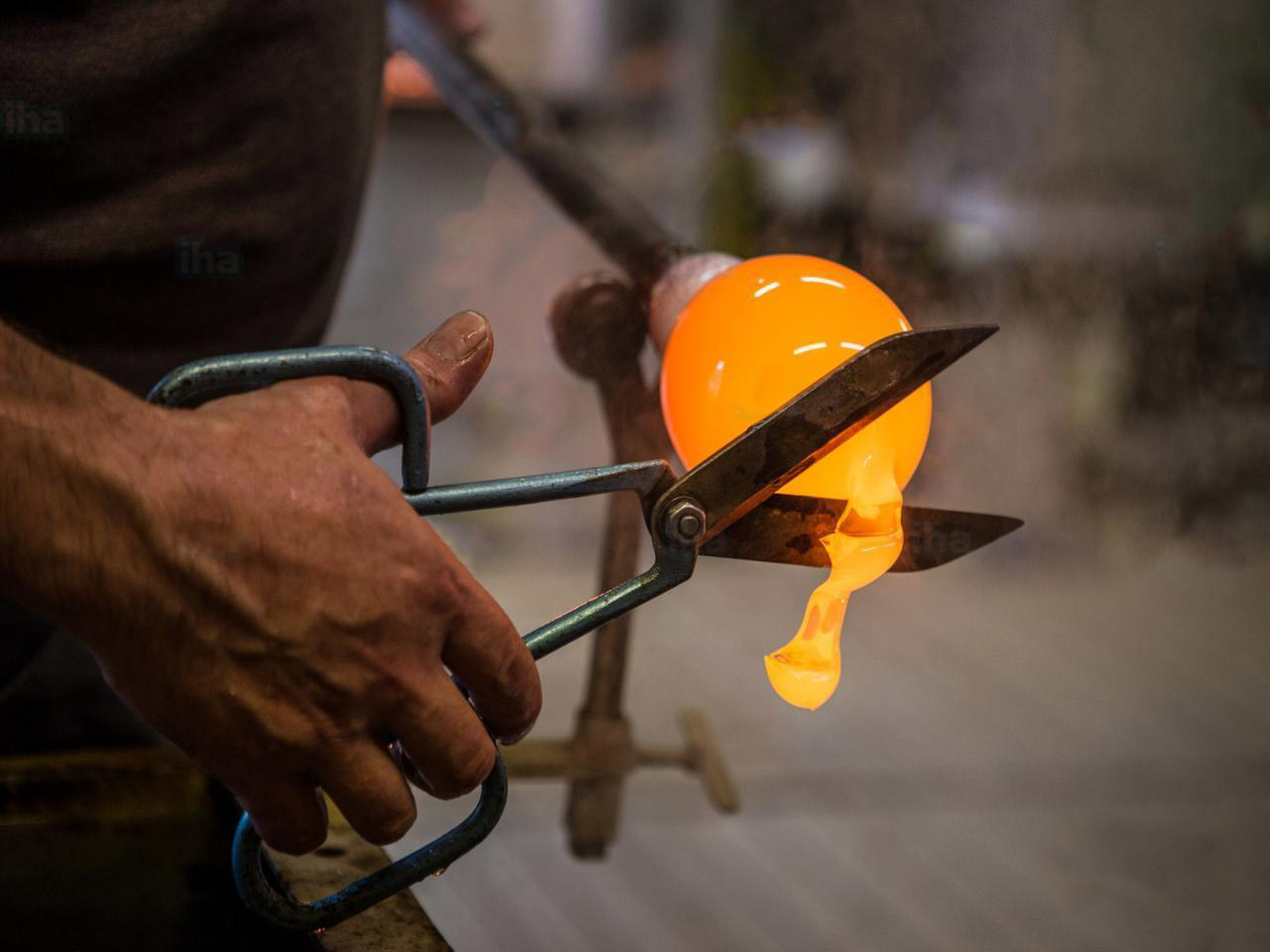
Colle Val d’Elsa
Head for the old town, located above the rest of the city, by taking the elevator at the bottom of the hill to the top for stunning views and winding cobblestone roads with various restaurants and shops that are less touristy than you find in many Tuscan towns. In the lower section of town, check out the Friday morning market, and stop in for lunch or dinner at Sbarbacipolla if you’re looking for a creative take on local foods (see info in restaurant list below).
Where is it?
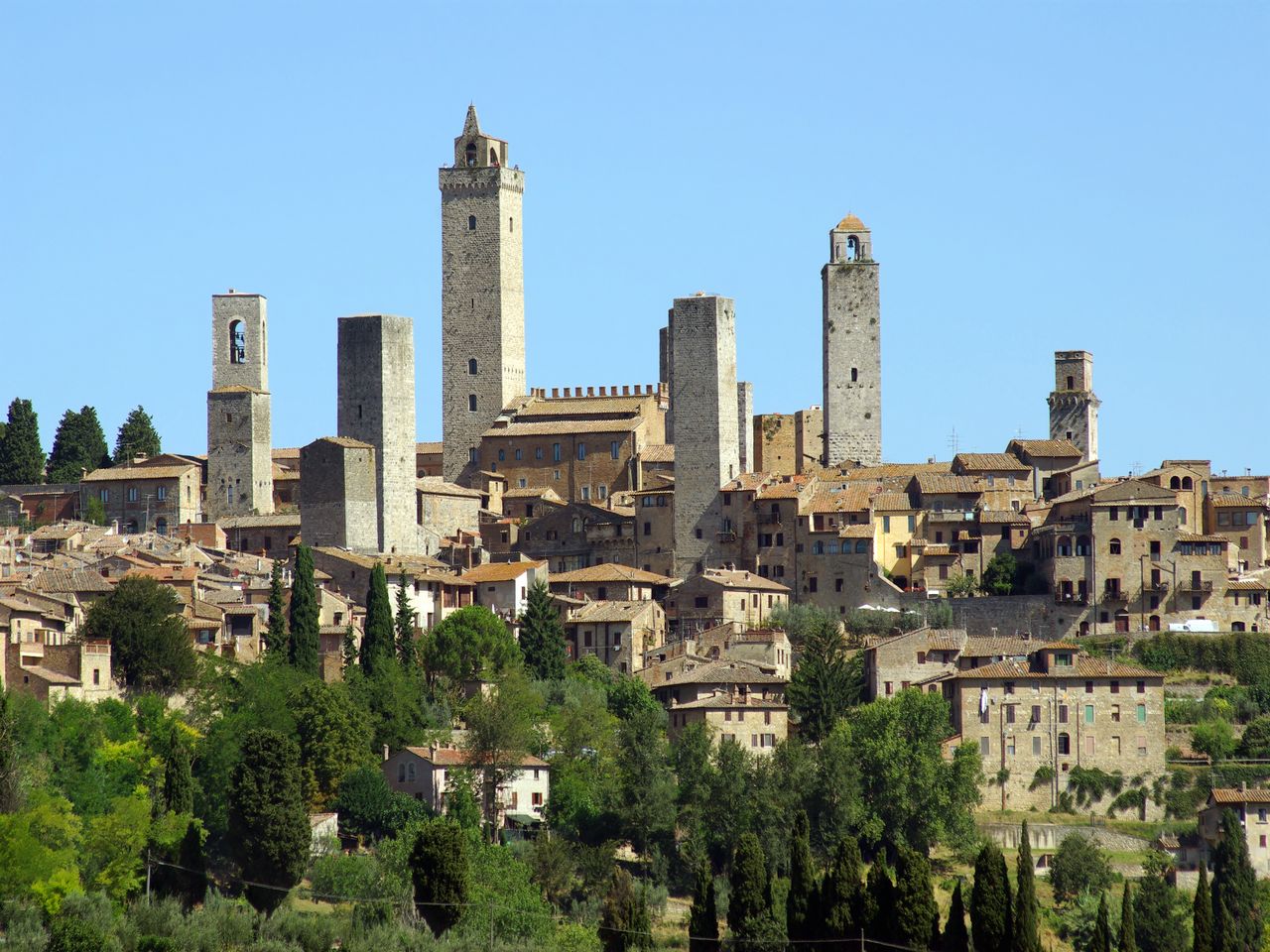
San Gimignano
Where is it?
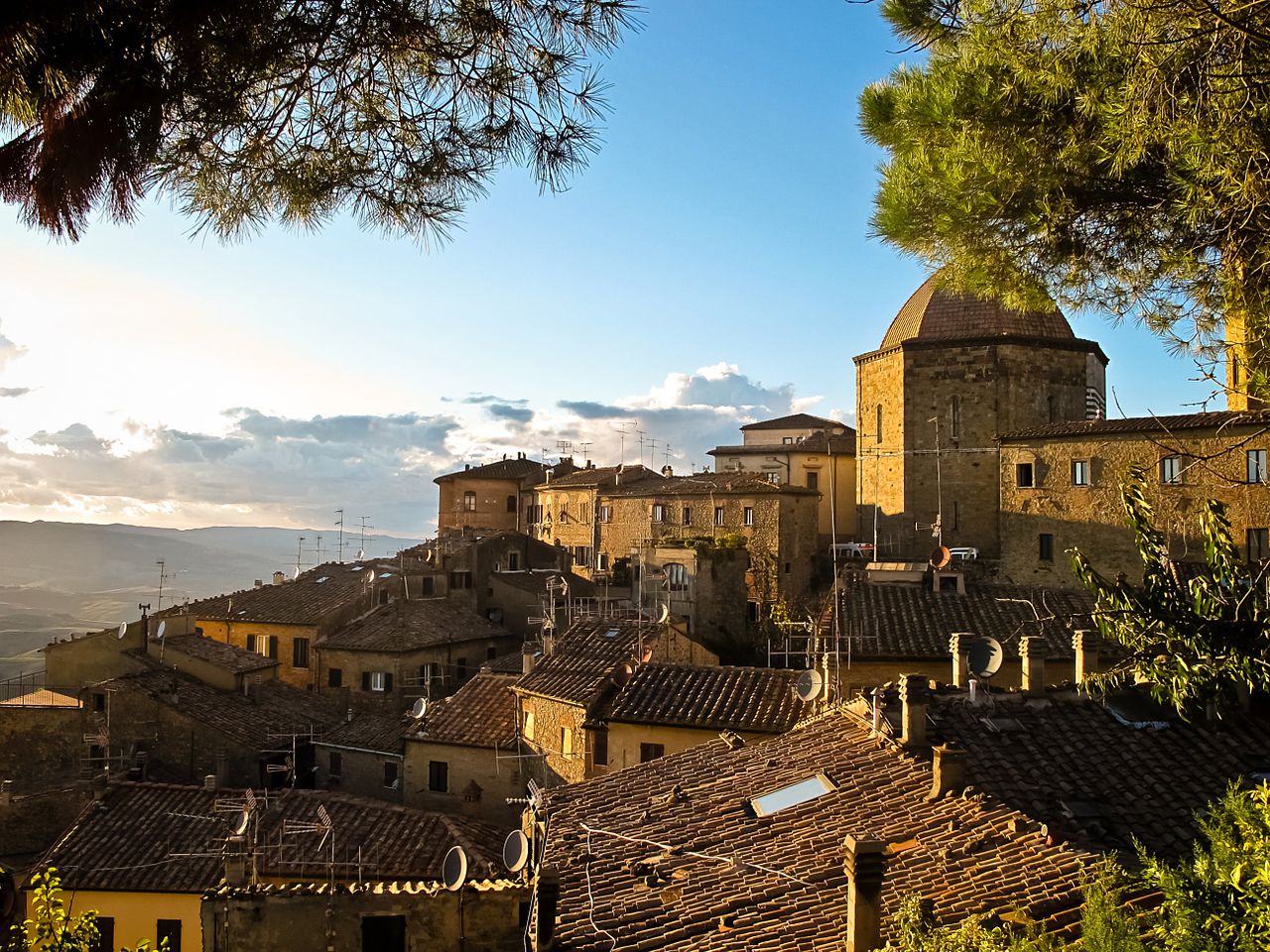
Volterra
Where is it?
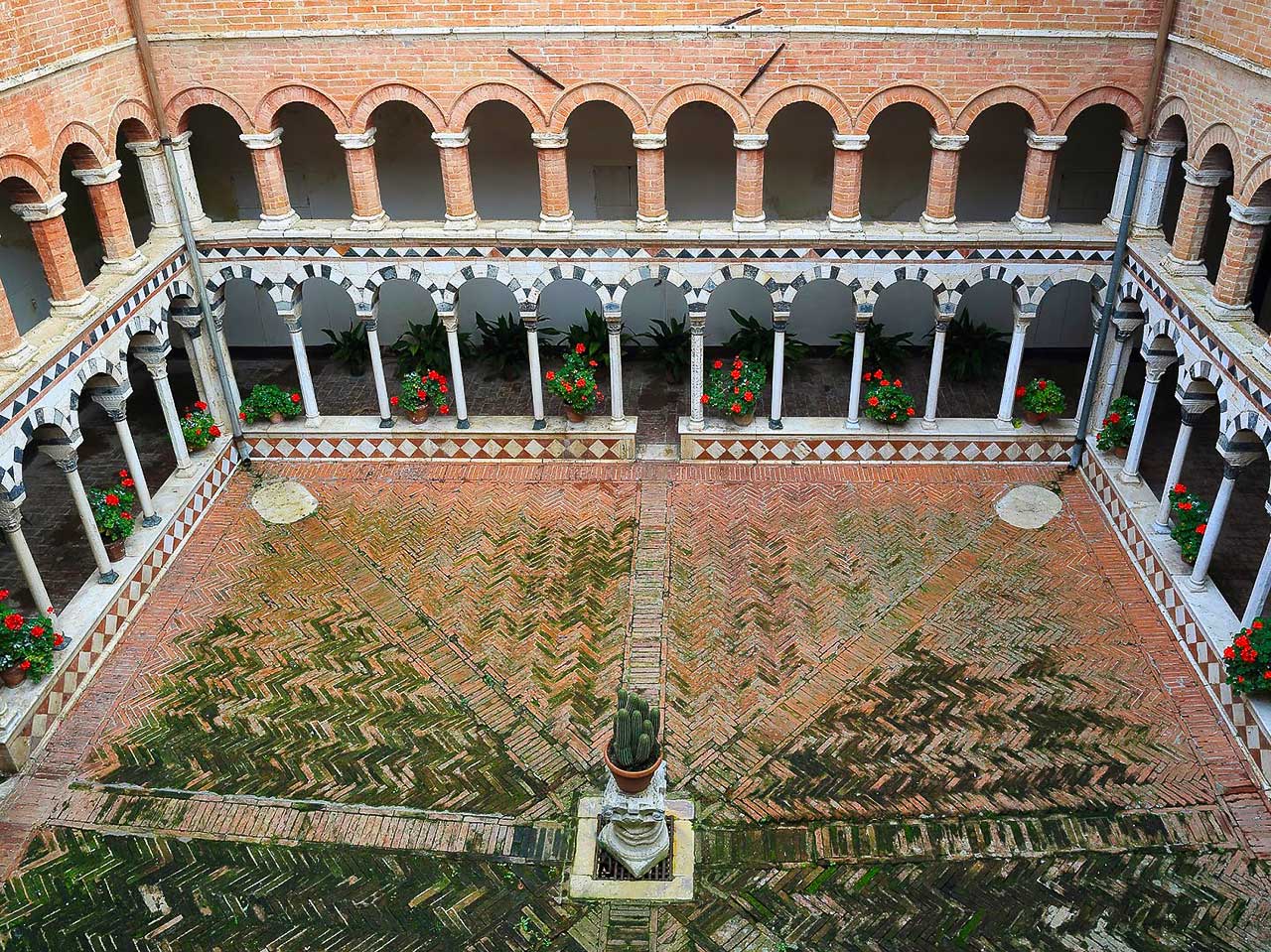
Torri
Where is it?
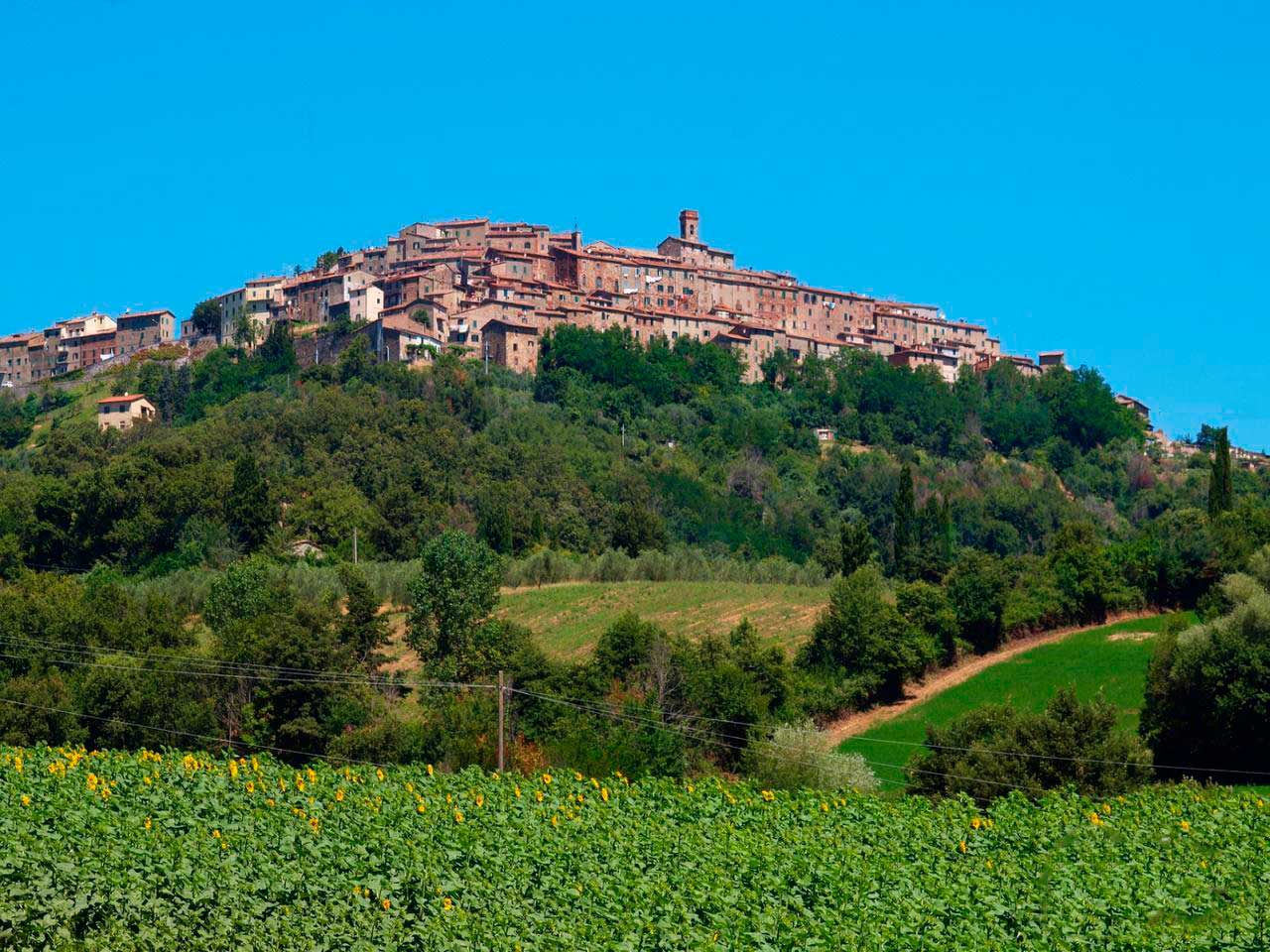
Chiusdino
Where is it?
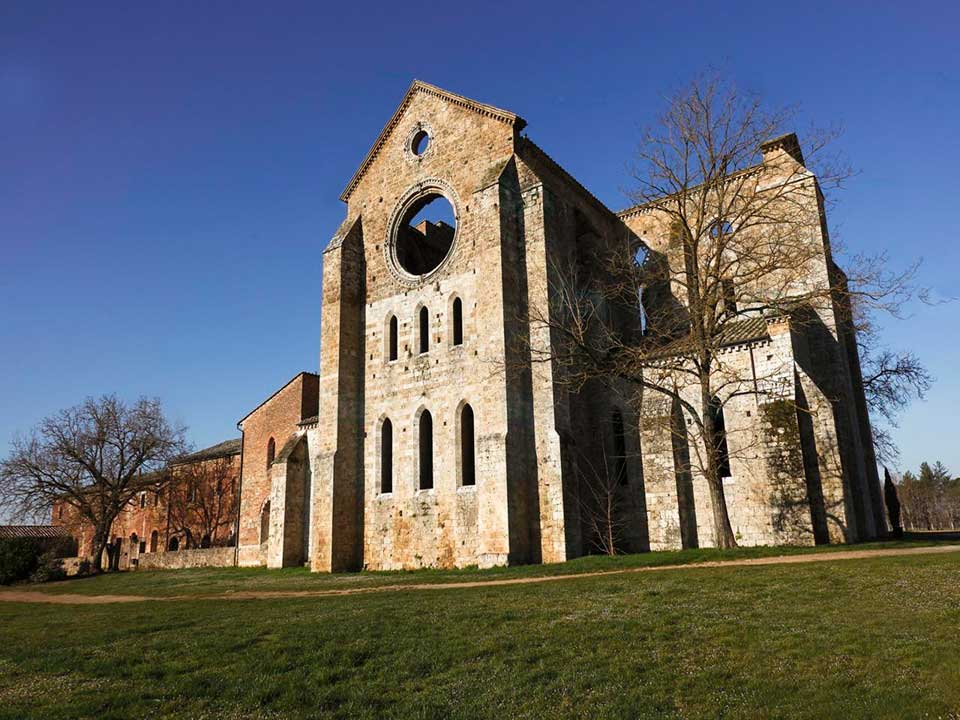
ABBAZIA DI San Galgano
About 15 km southwest on highway 73 (turning right at the gas station on SS 441 for the last 3 km) is the dramatic ruin of the 13th century church of San Galgano. Don’t miss the remarkable circular chapel of Monte Siepi on the hill above, site of the miraculous «sword in the stone» of Saint Galgano. There is a lovely wine bar that serves antipasti all day, located halfway up the hill between the abbey and the chapel: with outdoor seating and a terrific view of the valley and mountains to the west, this is a great spot for a sunset aperitivo.
Where is it?
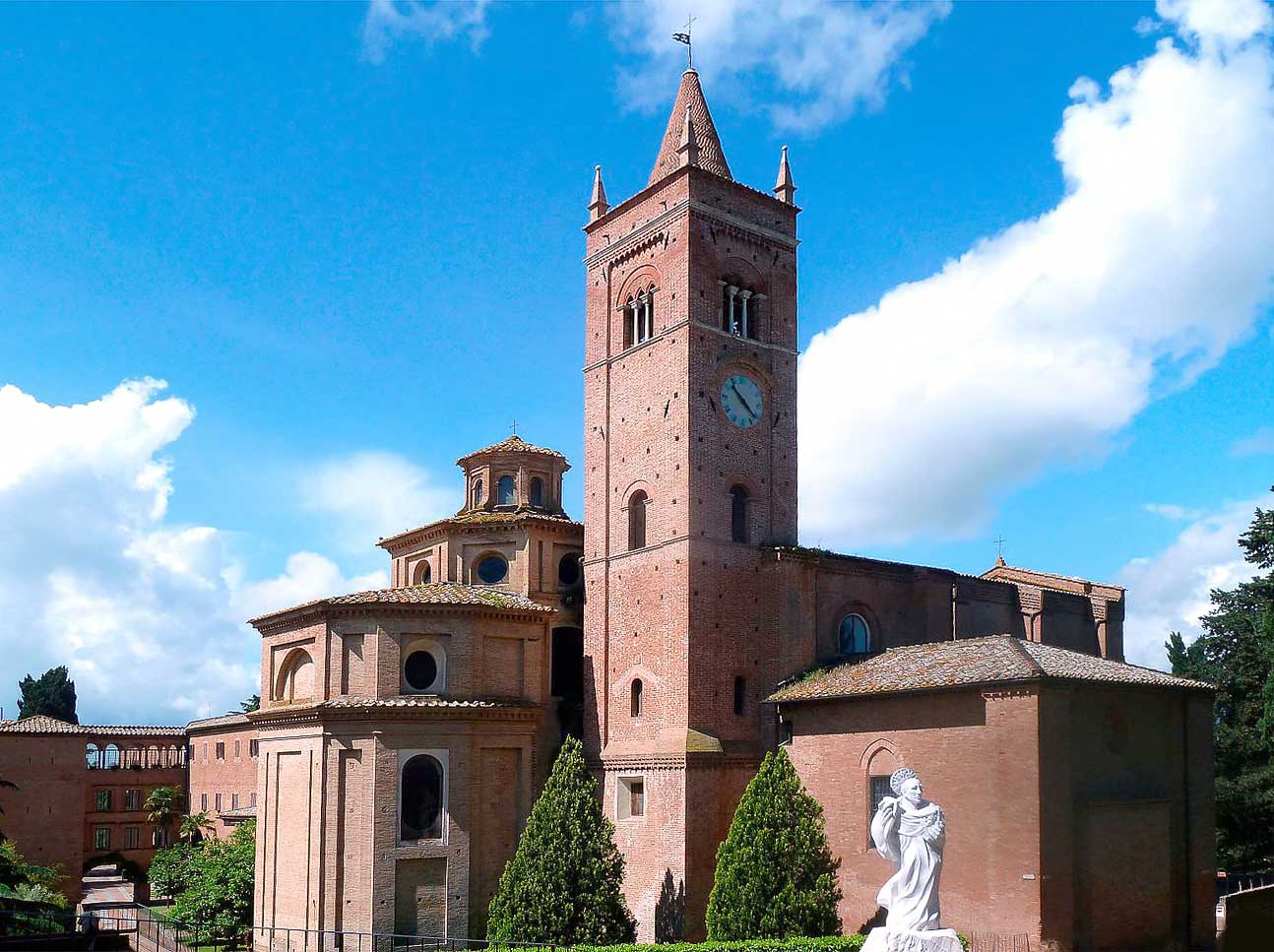
ABBAZIA DIMonte Oliveto Maggiore
Where is it?
